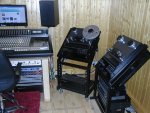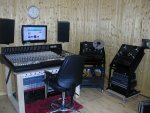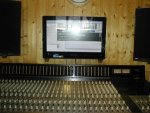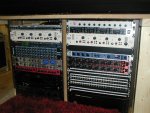altruistica
Member
My new RME UFX converter arrived today and I'm gob-smacked.
I haven't used RME stuff since about 2005 when I bought a 2nd-hand Carillon PC which had a Hammerfall 9652 card in it. At the time I'd moved onto the AKAI DPS24 and used it for a good few more years so never used the Hammerfall much, but I was impressed how well it clocked, whether it was master or slave, it always worked.
FF to today and the sound has just blown me away, even working at 44.1 / 16 bit. It could well be the combination of the sound of the M3500 as well, but everything has a life to it that I've strugled in the past to achieve. I really think I'm going to get some good results by tracking onto tape, shoving it in the computer and mixing it from there. For the moment I think I'm going to remove the MACKIE Ultramix out of the line up as I think I don't really need the added noise (not much but it was there) and I think I'm going to be able to get what I want from Reason and the M3500. Reason has definitely never sounded this good.....there is a body to the sound now and evrything just sounds clearer, more spacious, but not tinny or glassy. Those clever Germans know how to make things. It wasn't cheap, but with a 5-year guarantee thrown in, I'm going to bed now a very happy camper.
Al
I haven't used RME stuff since about 2005 when I bought a 2nd-hand Carillon PC which had a Hammerfall 9652 card in it. At the time I'd moved onto the AKAI DPS24 and used it for a good few more years so never used the Hammerfall much, but I was impressed how well it clocked, whether it was master or slave, it always worked.
FF to today and the sound has just blown me away, even working at 44.1 / 16 bit. It could well be the combination of the sound of the M3500 as well, but everything has a life to it that I've strugled in the past to achieve. I really think I'm going to get some good results by tracking onto tape, shoving it in the computer and mixing it from there. For the moment I think I'm going to remove the MACKIE Ultramix out of the line up as I think I don't really need the added noise (not much but it was there) and I think I'm going to be able to get what I want from Reason and the M3500. Reason has definitely never sounded this good.....there is a body to the sound now and evrything just sounds clearer, more spacious, but not tinny or glassy. Those clever Germans know how to make things. It wasn't cheap, but with a 5-year guarantee thrown in, I'm going to bed now a very happy camper.
Al







